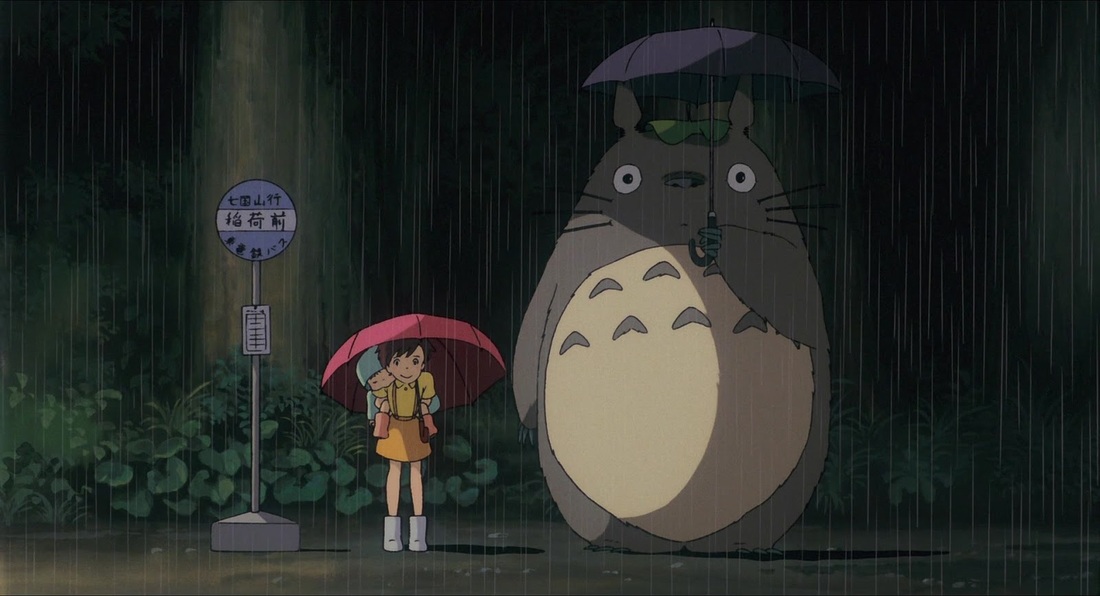-Roger Ebert
Genre: Fantasy
Creator: Hayao Miyazaki
Studio: Ghibli
Length: 86 minutes
Year: 1988
Highlights: Innocence incarnate
My Neighbor Totoro is the story of two young and energetic girls, Satsuki and her younger sister Mei. They have just moved to the countryside with their father in order to be closer to the hospital where their mother is confined due to an unspecified (but serious) illness. While exploring the new house, they encounter strange creatures which their father says must be magical soot spirits, and they quickly deduce that the house must be haunted. While exploring the nearby forest, Mei stumbles upon a path which leads her to a giant camphor tree, and when she ventures inside its trunk she discovers a large, furry creature which she dubs “Totoro”. Before long Satsuki meets him as well, and they quickly become friends with Totoro and the other forest spirits. This is woven into story threads that show the everyday trials and tribulations of moving to a new town, going to school, and making new friends.
In many ways, My Neighbor Totoro is the thematic opposite of Spirited Away. While Spirited Away is all about how Chihiro must learn to better herself as a person and grow up, My Neighbor Totoro is about the joy of being a child. It’s about innocence, as Satsuki and Mei are still young and innocent enough that they can see and play with Totoro. Satsuki and Mei are virtual incarnations of the innocent child, and their dialogue and playfulness will bring a smile to even the most cynical film viewer. However, that does not prevent the film from dealing with serious subjects. Satsuki and Mei are both well aware of how sick their mother is, and that there is a very real possibility she may die. To see these children who just a few minutes ago played and laughed like they were spirits themselves suddenly burst into tears at the prospect of never seeing their mother again is simply heartbreaking. It highlights not only the bliss but also vulnerability of childhood, and the fact that Miyazaki was able to nail that so perfectly is simply astounding.
This film showcases Studio Ghibli’s stunningly beautiful animation just as much as every other one of their films, but in a slightly different manner. Satsuki and Mei never leave our own real world, and Totoro and the other spirits are the only fantastical elements, and so this is actually one of the more realistic of Ghibli’s films. But just because the animation is illuminating rural Japan rather than a fantasy world does not make it any less captivating.
My Neighbor Totoro is such a wonderful film because it reminds all of us what it is like to be a child. Innocence, once lost can never be regained. But it can be relived, and that is a priceless gift. I thank Miyazaki for helping me remember what childhood is truly like. Although the child in me will always be pissed that Totoro didn’t live in my backyard.

 RSS Feed
RSS Feed
